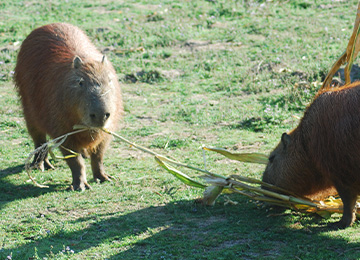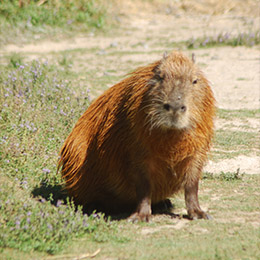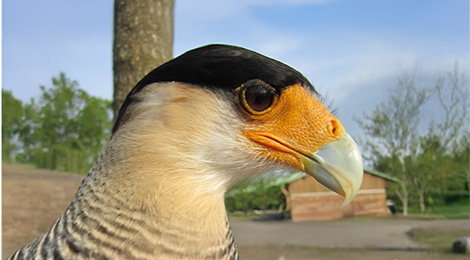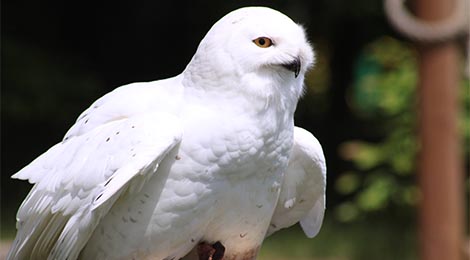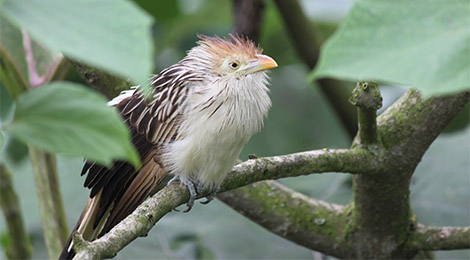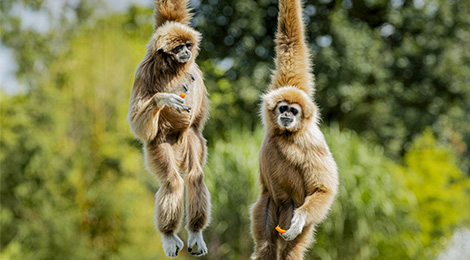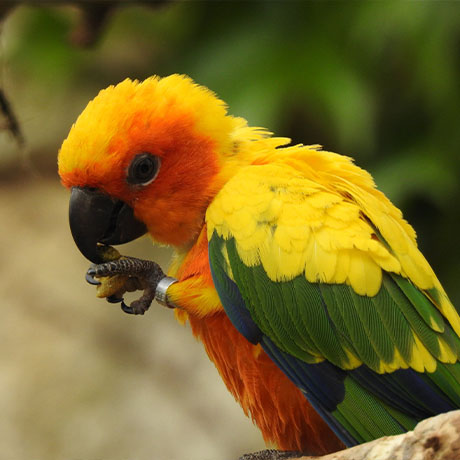A semiaquatic animal who spends some of its time on land
Capybaras have partially webbed feet and particularly like bodies of water and marshes. To remain hidden while continuing to keep an eye out for predators, capybaras immerse themselves almost completely in water. Like hippopotamuses, only their ears, eyes and nostrils (located at the top of their skull) remain above the waterline to survey the surrounding area.
It is a nocturnal animal which prefers to shelter in a muddy den during the day. Capybaras have many predators such as jaguars and caymans, but also humans, who hunt them for their hide and flesh. They live in small groups of around 10 individuals, managed by the dominant male. They find food in the area around their den. They use their powerful incisors to cut through plants and roots.
Capybaras are found in South America, in Venezuela and Brazil.
-
HabitatForest, marshes, river arms
-
Food
Bark, roots, seeds, grasses and fruit.

The capybara is the largest rodent in the world, and males can weigh more than 60 kg.
A zoological reserve populated by Asian elephants, giraffes, lions, tigers, hippos, chimpanzees, gibbons, wolves, ostriches ... Animals evolving in their reconstituted natural environment, to discover as a family.
All animals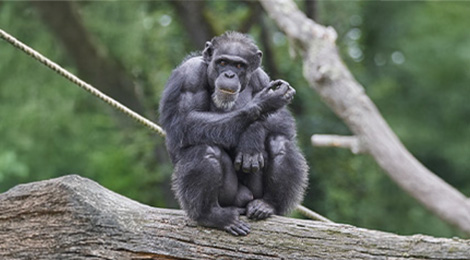
-
![]() Chimpanzee Discover animal
Chimpanzee Discover animal -
![]() Hippopotamus Discover animal
Hippopotamus Discover animal -
![]() Crested caracara Discover animal
Crested caracara Discover animal -
![]() Snowy owl Discover animal
Snowy owl Discover animal -
![]() Guira cuckoo Discover animal
Guira cuckoo Discover animal -
![]() Lar gibbon Discover animal
Lar gibbon Discover animal -
![]() Eurasian eagle owl Discover animal
Eurasian eagle owl Discover animal -
![Gros plan sur une Conure soleil et son plumage coloré au parc animalier Le PAL]() Sun parakeet Discover animal
Sun parakeet Discover animal -
![Flamant du Chili debout dans l'eau au parc animalier Le PAL]() Chilean flamingo Discover animal
Chilean flamingo Discover animal



